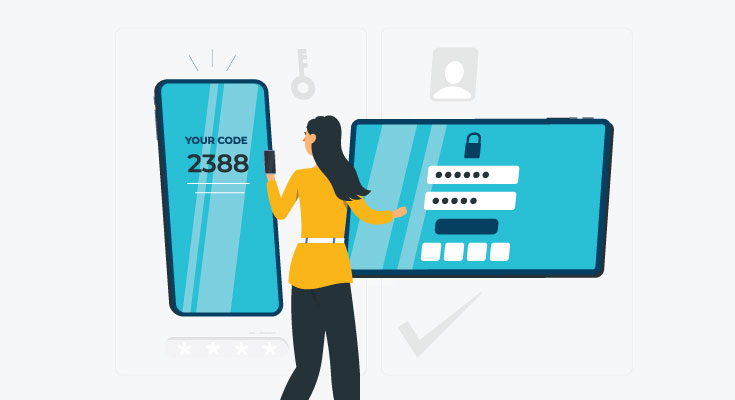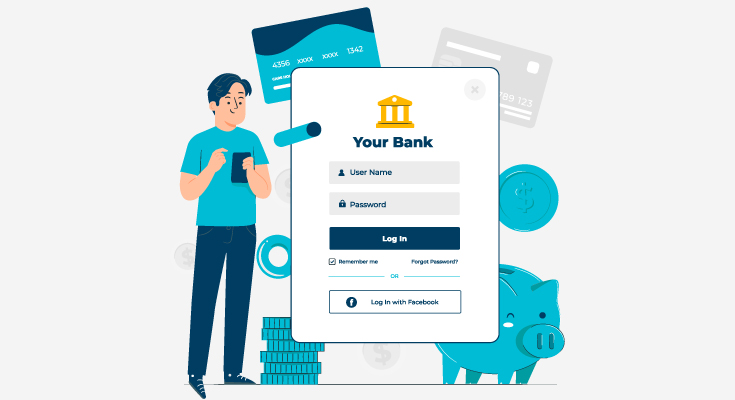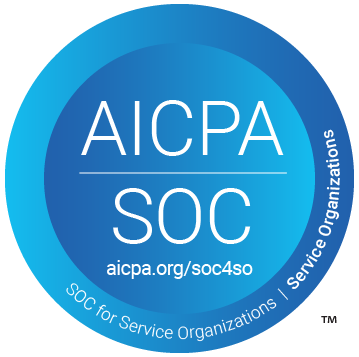Blockchain has taken the world by storm and is changing everything, from payment transactions to how money is raised to security in online banking. The main question here is, can traditional banking embrace the change or will it be replaced by something new? It is undeniable that blockchain affects banking in a number of ways.
In the last decade itself, blockchain technology has received a lot of attention, and all for the right reasons. Despite the skepticism about the technology, the question “will blockchain revolutionize the banking industry?” remains.
Blockchain and Banking: What Role It Plays in the Financial Industry?
Blockchain technology offers a way for untrusted parties to verify the state of a database without the need for a middleman. A blockchain offers a ledger where the information is available to everyone and the information is immutable. A blockchain could provide specific financial services such as payments without needing a bank operating as a middleman. It can also enhance data security, and bank account verification and customer ID verification process.
Blockchain technology/decentralized ledger technology has a huge chance of disrupting banking by reducing the need for middlemen. Here’s a proper breakdown of how blockchain affects the banking industry while providing new business models using technology.
How Blockchain Will Change Traditional Banking Methods?
1. Improves Sending & Receiving Payments
Sending and receiving payments using traditional banking methods is not exactly effective. Let’s say you want to send money from the U.S. to the U.K., you’ll have to pay a fee to the middleman for a wire transfer. To make matters worse, the person you’re sending money to, may not even register the transaction until a week later.
Completing payments is highly profitable for banks, providing them with little to no incentive to lower their fee on transactions. In 2019, banks generated $224B in payment revenue from cross-border transactions, payments to letters of credit, and more.
Bear no misconceptions in mind, cryptocurrencies have to go a long way to replace government-issued currencies. In the last couple of years, the transaction rate of cryptocurrencies has grown exceptionally, one such example is Bitcoin.
Some companies are using Blockchain technology to improve their B2B payments in growing economies. A company named BitPesa facilitates blockchain-based payments to growing economies like Kenya, Nigeria.
Blockchain technology is also being used worldwide to support micropayments. Online wallet providers offer users with perks to make micropayments using Bitcoin, U.S dollar, or any other payment method allowed by apps. This is the first way on how blockchain affect banking industry.
2. Clearance and Settlements Systems
As mentioned above, an average bank transfer takes up to 3 days to settle, which is because of the lack of proper infrastructure. The antique financial infrastructure makes moving money around a hassle for both consumers and banks.
Something as simple as a bank transfer has to go through several intermediaries and comply with a series of compliance requirements for payment completion. Blockchain technology works as a decentralized “ledger” of transactions. Instead of banks utilizing SWIFT to keep track of transactions, interbank blockchain technology can track all the transactions securely.
Blockchain also supports “atomic” transactions (transactions that are settled as soon as payment is completed). The process is opposite to financial systems globally, which clear and settle the transaction after a couple of days.
Streamlining blockchain technology can eliminate the high costs of maintaining a global network of banks. According to a report made by Accenture, the use of blockchain can reduce transaction settlement costs by $10B annually.
3. Enhances Raising Funds Process
If you’ve been in the financial industry all your life then you must be aware of how arduous raising money through venture capital is. Entrepreneurs have to sit through long negotiations just to sell a part of the company for the money required.
Some companies on the other hand are raising funds using ICO (Initial coin offerings) that are backed by digital assets like Bitcoin and Ethereum. The value of a token is tied to the success of a blockchain company directly. Using ICOs, blockchain companies can raise money by selling coins directly to the public.
There have been some ICOs that have managed to raise millions upon millions before showing any proof of a viable product. 2018 was the high point for ICOs globally, since then there has been a significant fall in ICO transactions.
While most of the ICOs had the sole purpose of raising money for blockchain products. Now, we’re seeing a trend change where more and more companies are built around decentralization technology.
One of the biggest examples is Telegram, a messaging app, raised $1.7B with ICO. The goal behind ICO is to sell tokens to users and set up a payment platform alongside messaging app. Based on regulations, ICO activity should be done with caution. Unregulated ICOs started failing after 2018, thus leading to the fall of ICO transactions.
4. Ensures Security of Payments and Banking Data
Financial transactions of all kinds come with their fair share of risks. Customers need to know who owns the assets like stocks, and commodities that you’re investing in. The largest financial markets globally achieve this transparency with a complicated chain of brokers, online exchanges, custodian banks, and so on. These relationships are built on a slow paper-based method that can be highly inaccurate.
If someone wants to buy a share of YouTube, they’ll have to place their order through a stock exchange, the exchange then will match them with a seller. 10 years ago, you’d spend cash and get a certificate for your purchase as proof.
Now that all these transactions have gone digital, the process has become more complicated. To reduce the hassle of managing the assets every day, companies outsource this process to custodian banks. As buyers and sellers don’t always use the same custodian banks, the banks themselves have to use a third-party service provider to manage the paper certificates.
To streamline the process, blockchain technology creates a decentralized database of digital assets. With a decentralized ledger, it’s possible to transfer the rights to an asset using cryptographic tokens. Huge cryptocurrency providers like Bitcoin and Ethereum have accomplished this using digital assets. Newer blockchain-based companies are still struggling to find ways to convert real-world assets into crypto tokens.
5. Secure Loans and Credits Offering
Banks and lenders underwrite loans using an old method known as “Credit Reporting”. The utilization of blockchain technology allows P2P loans, complex programmed loans, and a faster, more secure loan process in general.
Whenever a person applies for a loan, banks have to assess their risk level. Banks/lenders use credit score, credit history, debt-to-income ratio, and homeownership status. This centralized system can prove hostile to consumers. FTC stated that 1 in every 5 American residents has some kind of error in their credit score that makes it harder for them to acquire loans. As most credit information is distributed between three organizations (Experian, TransUnion, and Equifax), they are usually under attack. The 2017 Equifax data breach led to 150M Americans’ data loss.
Using blockchain for lending purposes offers a cheaper and efficient solution. This way more people can acquire a personal loan, all the while reducing poor consumer experience and risk of loan fraud. With a cryptographically secure, decentralized ledger of transaction history, banks can decide to approve loans based on a global credit score.
6. Simplifies the Trade Finance Process
The only reason trade finance exists is to eliminate fraud risk, extend credit, and make sure exporters and importers can take part in international transactions. Trade finance is a vital cog in the global financial process and still, it relies on an outdated method with manual paperwork.
Blockchain aims to improve and streamline the complex process of trade finance. Which will end up saving billions of dollars for importers, exporters, and their financiers. Trade finance is one of the few areas where blockchain has a firm foot, however, when it comes to streamlining the bills of lending and credit, it’s still taking the initial steps.
Just like countless other industries, the trade finance market has suffered at the hand of an antique, inefficient manual documentation process. Physical letters from one bank to another bank are still used to ensure that the payment will be received.
Blockchain technology with its transparency enables firms to securely prove their country of origin, product, and other transaction details. It can provide better visibility into the shipments and a more efficient assurance of delivery.
7. Customer KYC and Fraud Prevention
Another sector that can be greatly improved with the utilization is customer KYC. Banks/firms/lenders need to verify the identity of their customers using a series of documents before allowing them to use their products or services.
Banks can take up to 3 months to complete their KYC procedures, including photo ID verification, address proof verification, and biometrics verification. A slow KYC process can lead to customers leaving a particular organization and switching to another one. Not just time and effort, banks also have to spend huge amounts for KYC verification. An average of $500 million is spent annually by banks to complete KYC proceedings.
Blockchain can reduce the human effort and the cost involved in following up with KYC compliance. Customer information can be stored on a blockchain and the decentralized nature of the platform allows all institutions to access the information and complete KYC compliance. Different types of frauds and cyberattacks are a huge concern for banks globally. Once a hacker gains access to a bank’s system they can access all customer information that’s stored on a centralized ledger. By using a decentralized ledger that is Blockchain, banks can ensure security of data. This is one of the major ways on how blockchain affect banking.
Companies like DIRO utilize blockchain technology and enhance the KYC process. DIRO verifies 7000+ customer document types for KYC verification and offers proof of authentication with verifiable credentials. Verified customer information is then placed on the blockchain with a digital hash. The result is a court-admissible customer document with forensic data. Banks, lenders, and other organizations can use DIRO for streamlining the KYC process by eliminating manual verification of customer documents like bank statements, utility bills, insurance documents, tax return documents, and so on. Plus the documents placed on the blockchain are immutable and secure from fraud.








